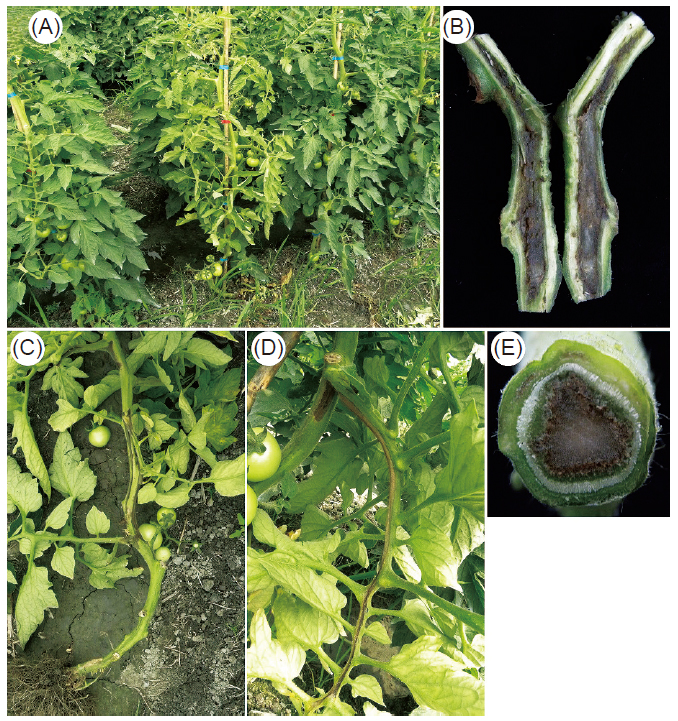All issues

Author:Chia-Hsin Tsai, Pao-Jen Ann, Yun-Sheng Lu, Shu-Ling Hwang, and Ting-Hsuan Hung*
Abstract:
In 2011 some chlorosis and declined tomato plants were noticed in a field located in Changhua County. Diseased plants had longitudinal dark brown lesions on the stems. Section of the diseased stem showed vascular brown discoloration and pith necrosis symptoms. The yellowish bacteria were isolated from the necrotic stem tissues of tomato on nutrient agar. The isolated bacteria were confirmed as a disease pathogen by Koch’s postulates test. The bacteria were identified as Pseudomonas mediterranea based on Biolog identification system, physiological and chemical tests, internal transcribed spacer (ITS) sequence analysis, and specific primer pairs in polymerase chain reaction. This is the first report of P. medietrranea causing tomato pith necrosis disease in Taiwan. On screening 10 agrochemicals, streptomycin and thiophanate methyl + streptomycin diluted 500-fold showed the most effective inhibition on pathogen growth.
Key words:Tomato, Pith necrosis, Pseudomonas medietrranea, Agrochemical screening
Download:![]() PDF Links
PDF Links
- 1. Using Digital Soil Mapping to Predict Soil Organic Carbon Stocks in Zhuoshui River Basin
- 2. Taxonomic Review of the Genus Asiophrida Medvedev, 1999 in Taiwan (Insecta: Coleoptera: Chrysomelidae: Galerucinae: Alticini), with Notes on Biology
- 3. Development of a Technique for Forecasting (or Pre-Detection) Anthracnose Disease Incidences of Green Mature Bagging Mango Fruits
 Submit your manuscript
Submit your manuscript
 Guide for authors
Guide for authors